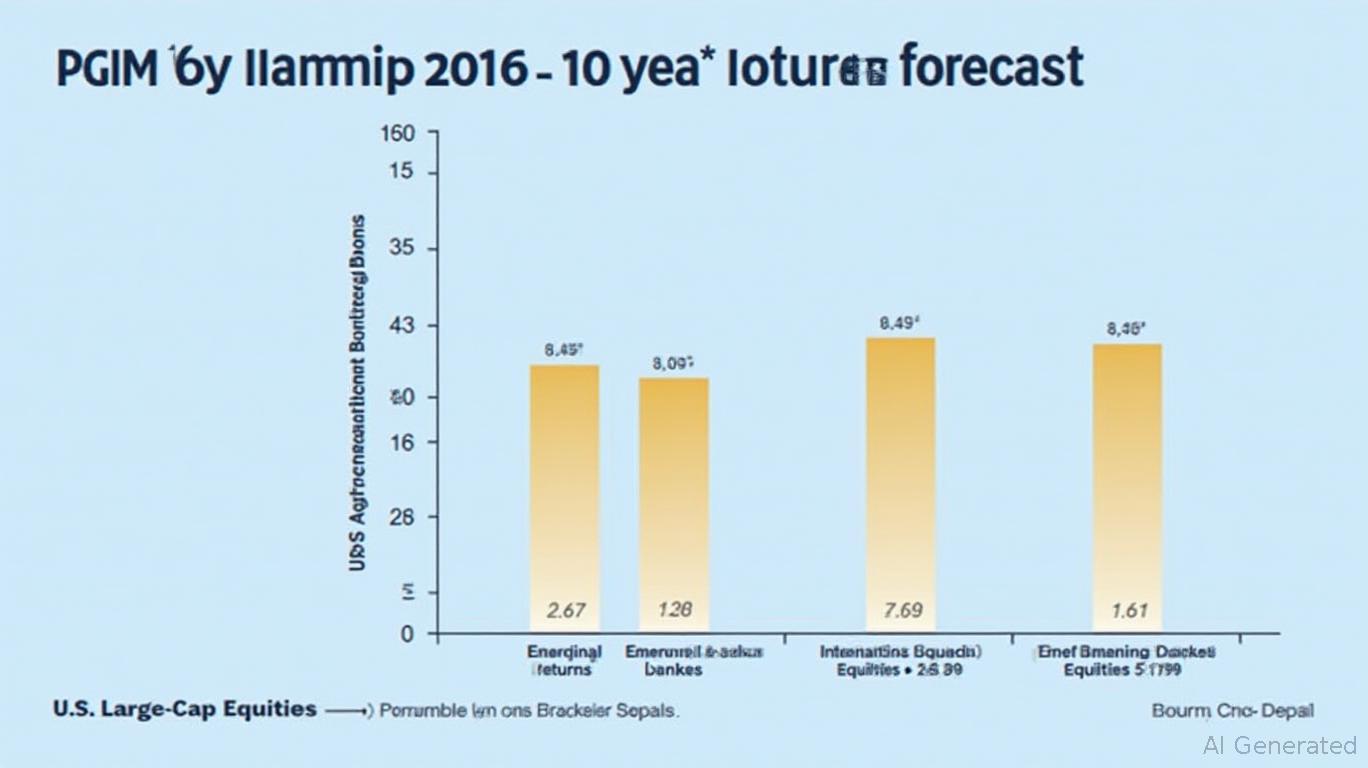The Shift to Asset-Based Finance: Navigating Q1 2025's Strategic Allocation Opportunities
As fixed income markets rebound and global equities diverge, investors face a pivotal moment to recalibrate portfolios. PGIM's revised Capital Market Assumptions (CMAs) for Q1 2025 signal a clear path: reduce exposure to U.S. equities and commodities while embracing the growth potential of asset-based finance (ABF) and select high-yield sectors. With central banks' rate cuts on the horizon and spreads widening in key markets, the case for strategic shifts has never been stronger.
The Fixed Income Bull Market Resurgence
PGIM's CMAs reveal a stark contrast between U.S. and international markets. Long-term returns for U.S. Aggregate Bonds have jumped to 5.23%, while Global Aggregate Bonds Hedged now offer 4.56%—both reflecting rising sovereign yields and a prolonged bull market in fixed income. Meanwhile, U.S. Large-Cap Equities are projected to deliver just 5.79% over a decade, lagging far behind International Equities Ex-U.S. (8.27%) and Emerging Markets Equities (8.79%).
This divergence is no accident. PGIM's forecasts hinge on valuation disparities: non-U.S. equities trade at discounts to U.S. peers, while fixed income's appeal is bolstered by moderate growth and investor demand for income. “The fixed income cycle isn't over—it's evolving,” says PGIM's Quantitative Solutions team, noting that carry trades and “buy-the-dip” strategies will dominate as central banks pivot toward easing.

Why Reduce U.S. Equities and Commodities?
PGIM's advice to trim U.S. equities and commodities isn't arbitrary. U.S. large caps are overvalued relative to global peers, and commodities face headwinds from slowing Chinese demand and a strong dollar. The equity premium—the excess return stocks offer over bonds—is narrowing, particularly in the U.S., where corporate earnings growth is lackluster.
Meanwhile, commodities are vulnerable to supply-side shocks. For instance, shows how the metal's correlation with equities has risen, eroding its diversification benefits.
Asset-Based Finance: The New Frontier for Diversification
ABF, a sector often overlooked by retail investors, is emerging as a critical tool for portfolio resilience. Edwin Wilches and Jennifer Herrera of PGIM highlight three trends fueling its growth:
- Structural Shifts in Lending: Non-deposit institutions are retreating from real economy lending, creating opportunities for ABF players to originate loans in sectors like consumer finance, solar energy, and commercial real estate.
- Enhanced Risk Mitigation: Loss triggers and tailored covenants now protect investors in ABF deals, even in a recession.
- Wide Opportunity Set: Spreads remain generous across subsectors—high-yield notes from finance companies, for example, now yield 9–10.75%—while diversification across asset classes reduces exposure to sector-specific risks.
Wilches emphasizes that ABF's “origination advantage” allows investors to access assets not available in traditional bond markets. “These are not just higher-yielding bonds—they're structured for downside protection,” he says.
High-Yield Markets: Caution, but Opportunities
Global high yield is another area where PGIM sees selective upside. After spreads tightened late last year—driven by improving credit conditions— now offer a sweet spot for investors. Emerging Markets High Yield, in particular, benefits from dollar strength and favorable valuations.
Yet risks persist. Herrera cautions that investors must scrutinize credit quality and macro vulnerabilities. “High yields come with higher risks, especially if rates rise again,” she notes.
The Strategic Reallocation Playbook
- Reduce U.S. Equities and Commodities: Allocate proceeds to Global Aggregate Bonds and international equities.
- Embrace ABF: Target sectors like solar energy and commercial real estate, where PGIM's direct origination capabilities shine.
- Dial into High Yield Selectively: Focus on investment-grade issuers and EM corporates with strong fundamentals.
Risks and the Role of Policy
While PGIM's outlook is optimistic, risks remain. A sharp rate hike or a global recession could pressure fixed income. Yet the firm's “buy-the-dip” thesis hinges on central banks' willingness to cut rates if growth falters—a scenario priced into bonds but not equities.
Conclusion
In Q1 2025, investors must pivot from passive allocations to active, strategic shifts. PGIM's CMAs and ABF insights offer a roadmap to capitalize on fixed income's resurgence and global high-yield opportunities. By reducing U.S. equity/commodity exposure and embracing ABF's diversification, portfolios can navigate the coming year with resilience—and potentially outperform.
As Wilches concludes, “This isn't just about chasing yield—it's about building a portfolio that thrives in any environment.” The time to act is now.

Comments
No comments yet